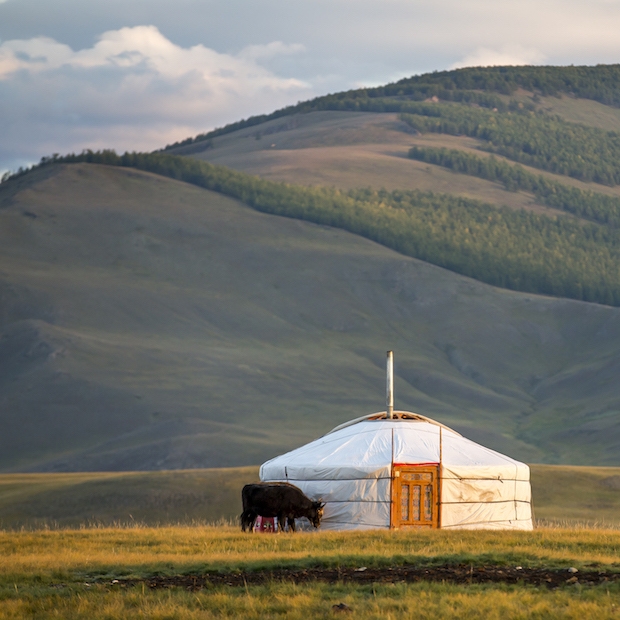The Gobi Desert Mongolia: Our Guide
Vast, raw, and unrelenting, Mongolia’s Gobi Desert is a land that defies expectations. To outsiders, it’s often imagined as an endless sea of sand, but the Gobi is far more than dunes—it is a living, breathing landscape of gravel plains, hidden springs, fossil-rich cliffs, singing sands, and resilient communities. It is a place where silence feels infinite, where survival has shaped both people and wildlife, and where every horizon seems to hold a story millions of years in the making.
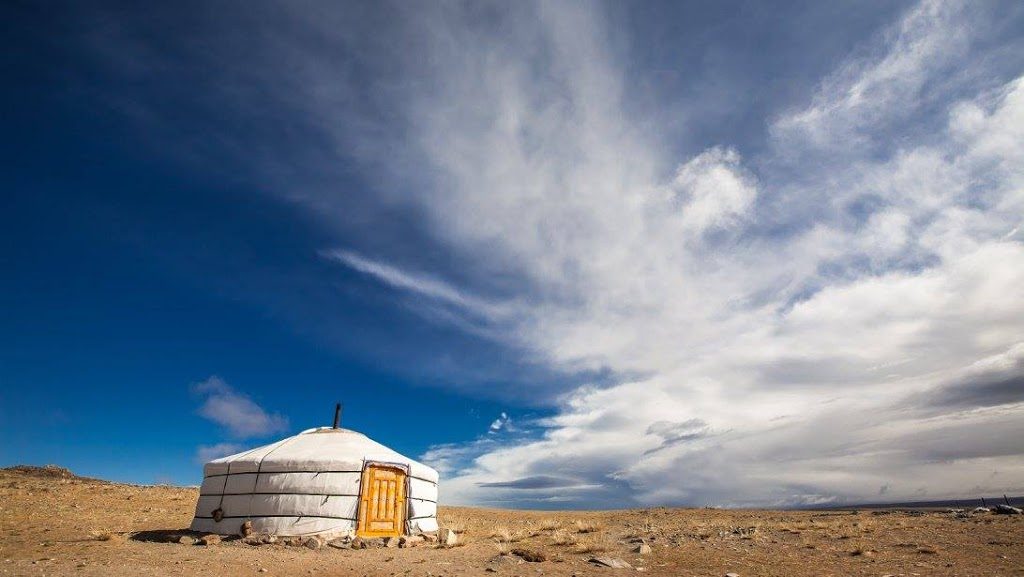
Table of Contents
“Mongolia’s Gobi Desert seems like earth reduced to its most basic elements: rock, sky, glaring sunlight and little else. The apparent emptiness is both compelling and intimidating. But the Gobi is not empty; it is filled with space, sky, history and landscapes.” Conservation InkThe Gobi, the world’s fifth-largest desert, stretches across southern Mongolia and northeastern China, covering five Mongolian provinces: Omnogobi, Dorngobi, Dundgobi, Bayankhongor, and Gobi-Altai. Renowned for its fossil-rich terrain, the Gobi’s distinctive geology harbors vast mineral resources, including substantial copper, coal, and gold reserves. Modern infrastructure, with new rail and road networks, is reshaping the region, connecting Mongolia’s largest mines—such as Rio Tinto’s operations—to the Chinese border.
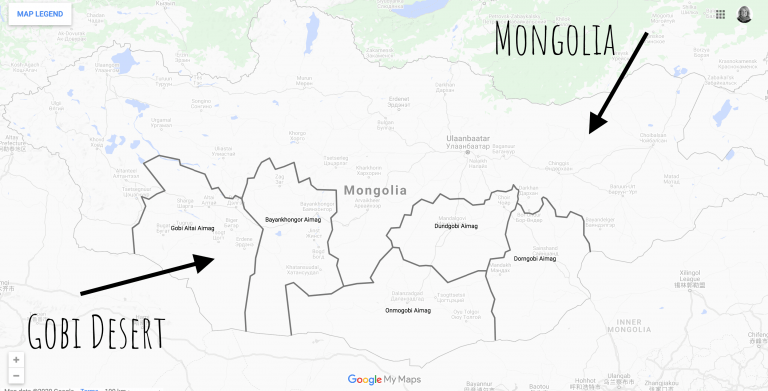
What makes the Gobi truly spectacular is the diversity and sheer vastness of its landscapes. Spanning 1.3 million square kilometers, the desert presents a stunning array of environments, from rugged massifs and pavement-like desert flats to poplar-fringed oases and sprawling outwash plains. Locals claim there are thirty-three distinct types of Gobi, each showcasing unique features and beauty.
In Mongolian, the word “Говь” itself means desert, so there’s no need to add “desert” after its name. The Gobi’s gravel plains have been traversed for centuries by nomadic peoples moving between its wells, springs, and oases. Historical research even suggests that the Mongol Army once cut through the Gobi Gurvan Saikhan range on their campaigns to the south.
‘There is certainly a beauty here, however, it is the gravel plains of the Gobi that stop my heart and leave my mind gaping in painful awe. The plains feel harsh, presenting a seeming endless barren desolation that is difficult to comprehend. Yet I sit and gaze into their expansive horizon, as I do into my evening fire, seeing nothing and everything in the vastness of this place. Each time we stop and I look around it takes a while for me to recover from the immensity and seduction of it all, and from the knowledge that I could not survive here unsupported.’ Sovay Berriman, EL guest
‘The word gobi denotes a desert or a waterless place but doesn’t really mean anything by itself. The Mongolians have many descriptive words for types of gobi, like the Eskimo and Scandinavians with their words for snow. There are supposed to be thirty-three Mongolian words for gobi – such as gravel, sand, bare earth, rock, mountain, dune, watering place, and those describing various types of vegetation. The ancient Gobi was more like an East African savannah – long grasses and some trees, with lakes and marshes. Successive waves of drought turned it into the more barren land it is today.’ John Man, Tracking The Gobi
The Green Gobi
Despite its harsh climate, with less than 100mm of annual precipitation, the Gobi Desert has the potential to transform into a “green desert” with the arrival of moisture. This rain shadow desert, formed by the Himalayas blocking rain-bearing clouds from the Indian Ocean, may seem barren at first glance, but its soil is not inherently lifeless—only deprived of water. When rain does come, the Gobi blooms, revealing a landscape teeming with life.
This diverse ecosystem supports some of Mongolia’s most threatened species, including the wild Bactrian camel, Gobi bear, wild ass, and yes, even snow leopards. The region is also home to a variety of small mammals, such as hamsters, jerboas, gerbils, and the irresistibly cute Mongolian pika. The Gobi’s surprising biodiversity makes it an important refuge for wildlife in one of the most extreme environments on Earth.
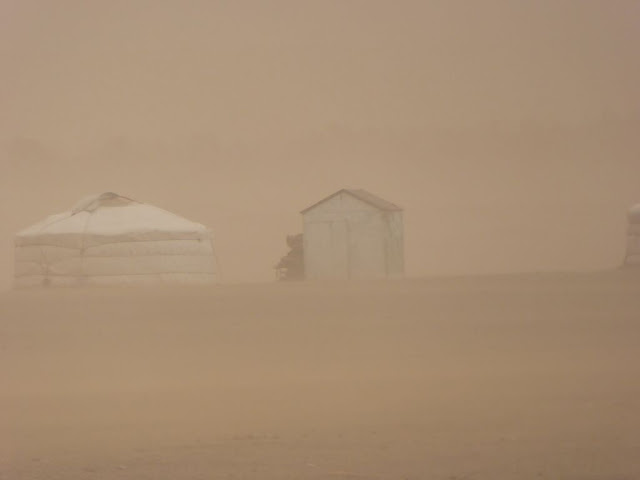
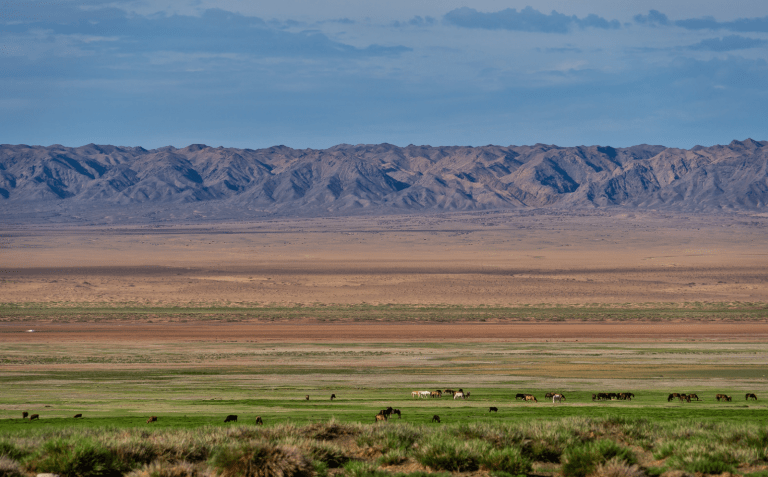
‘The word gobi denotes a desert or a waterless place but doesn’t really mean anything by itself. The Mongolians have many descriptive words for types of gobi, like the Eskimo and Scandinavians with their words for snow. There are supposed to be thirty-three Mongolian words for gobi – such as gravel, sand, bare earth, rock, mountain, dune, watering place, and those describing various types of vegetation. The ancient Gobi was more like an East African savannah – long grasses and some trees, with lakes and marshes. Successive waves of drought turned it into the more barren land it is today.’ John Man, Tracking The Gobi
A Cultural Landscape
The Gobi Desert is a land where survival depends on adapting to extreme temperature fluctuations, with temperatures ranging from freezing cold to near-boiling heat. Resilience is at the heart of life here, in a cultural landscape shaped by herders who have lived in harmony with the fragile Gobi ecosystem for generations. Despite the region’s sparse population, Gobi herders exemplify human adaptability, relying on scarce resources to sustain both themselves and their livestock in this arid terrain.

However, the traditional nomadic lifestyle now faces modern threats, particularly from water-intensive mining operations that put both the environment and the herders’ way of life at risk. Compounding these challenges is the looming threat of desertification, which casts a growing shadow over the Gobi. The desert is expanding due to climate change, shifting weather patterns, and increased aridity. These forces are degrading once-fertile lands, and overgrazing—especially by goats—is further straining the delicate ecosystem, leading to vegetation loss and accelerated erosion.
The expanding Gobi’s impact stretches beyond its borders, threatening food security and the livelihoods of those who depend on the land. Addressing desertification is not just an environmental imperative but a socio-economic challenge deeply connected to the future of the Gobi’s human and animal inhabitants.
In addition to the standard tourist ger camps, local herding families also offer ger accommodations for visitors. While these family-operated camps are more basic and lack the comfortable amenities of standard camps, they provide a unique opportunity to experience the lifestyle of the Gobi. Staying with a local family offers a glimpse into the daily challenges and traditions of their life, while also directly supporting the local economy.
But, don’t limit your Gobi experience to just the nomadic herders. The Gobi is also home to miners, drivers, Buddhist monks, musicians, conservationists, teachers, cleaners, students, shopkeepers, and other small business owners. Many live in provincial capitals like Dalanzadgad, home to the impressive Gobi Museum of Nature and History, or in smaller towns like Tsogt Ovoo. Though often windswept and rugged, these communities are deeply woven into the fabric of modern Mongolia.
To seek only the nomadic herders’ way of life is to overlook the rich diversity of Mongolian society and to disregard the full spectrum of life in the Gobi. When you visit the Gobi, expand your horizons. Not just through its landscapes, but also through the people you meet along the way.
Alpine Mountains & Gorges
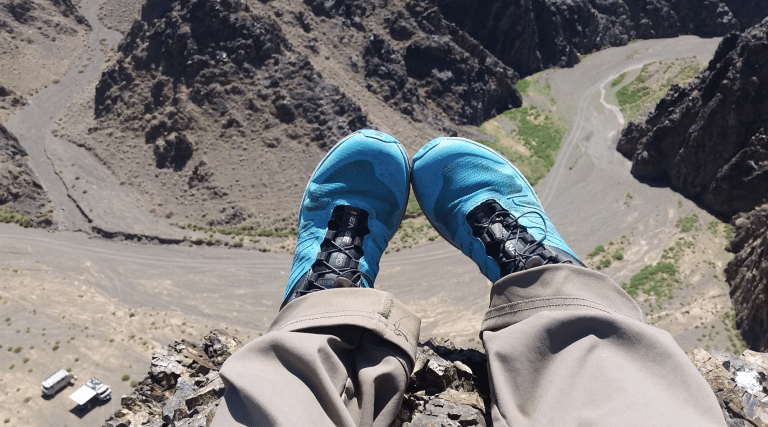
You will find fracture zones running along the base of the mountains – sometimes visible as a contour. These fracture zones dominate the ecology and economy of the Gobi as along these lines subterranean water is squeezed to the surface. Not all rainfall evaporates – some replenish the water table which under subterranean pressure then squeezes up through the cracks, emerging in springs.
One area where you can find a series of springs is the interior of the Gobi Gurvan Saikhan National Park – Mongolia’s largest national park and a mountainous terrain rising out of the extensive desert plains and a region of incredible biological diversity. This mountainous region was formed by the same tectonic activity that created the Himalayas and is part of the Gobi Altai Range – the outer crumple zone of the Himalayan geological activity.
Dinosaurs & Bad-Ass Explorers
‘The Gobi offers a cross-section of this sweep of earth’s history.’ – John Man
The Gobi Desert in Mongolia offers a fascinating lesson in Earth’s ever-changing environment—it hasn’t always been an arid desert. Around 80 million years ago, during the Late Cretaceous Period, the Gobi was a landscape of open grasslands, much like a savannah. Marshes, lakes, rivers, and patches of forest dotted the region, creating a diverse ecosystem. This period marked the final stage of dinosaur dominance, and some of the most significant fossil discoveries come from the Nemegt Basin in the Gobi. These fossils include species that illuminate the transition from the age of dinosaurs to the age of mammals, offering vital insights into Earth’s prehistoric past.
Jess: When was the Gobi a sea? Turuu: Back when I was a fish.
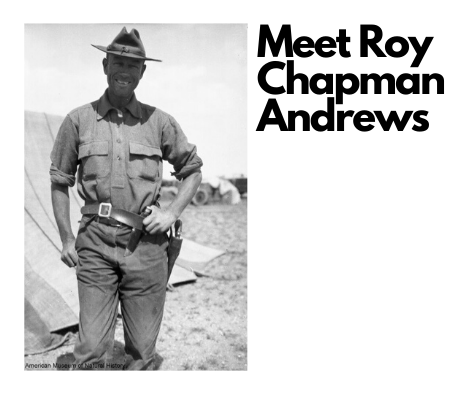
It is said that the character of Indiana Jones was inspired by Roy Chapman Andrews, the famed American explorer and paleontologist. In the 1920s, Central Asia was still largely unknown to the scientific community, but Andrews and a team of scientists ventured into the region on a series of five “Central Asiatic Expeditions,” sponsored by the American Museum of Natural History in New York City. Henry Fairfield Osborn, Andrews’s superior, had theorised that “Asia would prove to be the womb in which mammals had developed, and the base from which they dispersed throughout the world” (John Man: Gobi: Tracking the Desert).
Andrews’s expeditions to the Gobi Desert are still considered groundbreaking. Among their most significant discoveries were the first nests of dinosaur eggs at Bayanzag, also known as the Flaming Cliffs, as well as new species of dinosaurs and fossils of early mammals that coexisted with dinosaurs. These findings revolutionised the understanding of prehistoric life and established the Gobi as one of the world’s most important paleontological sites.
‘I have been so thirsty that my tongue swelled out of my mouth. I have ploughed my way through a blizzard at 50 below zero, against wind that cut like a white-hot brand. I have seen my whole camp swept from the face of the desert like a dry leaf by a whirling sandstorm. I have fought with Chinese bandits. But these things are all part of a day’s work.’ This Business Of Exploring, Roy Chapman Andrews
‘Like a fairy city, it is ever-changing. In the flat light of midday the strange forms shrink and lose their shape, but when the sun is low the Flaming Cliffs assume a deeper red and a wild and mysterious beauty lies with the purple shadows in every canyon.’ Roy Chapman Andrews, The New Conquest Of Central Asia
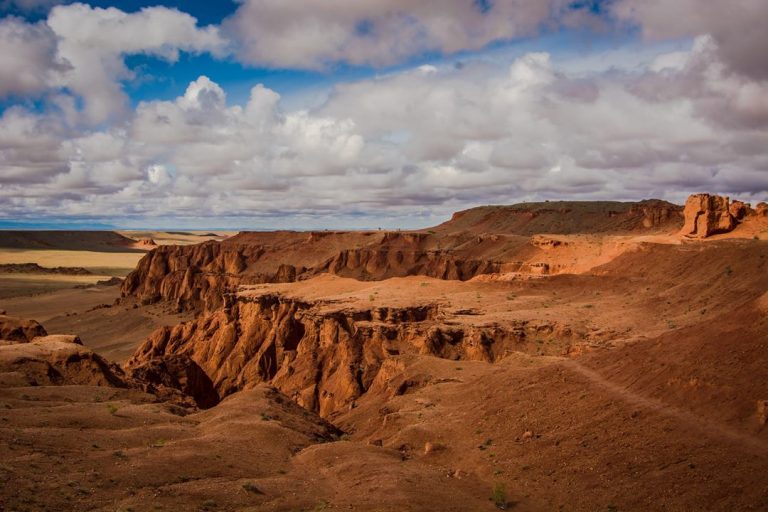
Camels & The Singing Sands
‘The dunes of Khongoryn Els sweep up against Zöölön Uul, a mountain range that is at the easterly reach of the Gobi Altai. You could say the dunes were a mountain range themselves. They are mammoth, the highest peak of sand being approximately 300m. They present the stereotypical beauty I think of in relation to a desert; sweeping lines and sharp contrasting forms lit by an unforgiving sun. ‘With the rising of the moon the desert takes on its most captivating appearance, and though the long hours while she travels from one side of the horizon to the other she has her own way with human imagination, softening the austere outlines and investing the barest formations with subtle charm. She is mistress of magic and with one touch can turn the wilderness into a dream world.’ Mildred Cable and Francesca French, The Gobi Desert

What you might not know is that camels have been used for transportation in Mongolia for centuries, including as vital pack animals on The Tea Road—an ancient trade route that connected China to Russia and beyond. These sturdy, resilient animals were essential for carrying heavy loads of goods across Mongolia’s vast, challenging terrain.
If you’re intrigued, you can learn more about our unique camel trekking experiences and how we explore Mongolia’s stunning landscapes with these incredible animals here.
The Marvellous Middle Gobi
Informally known as the Middle Gobi, this region encompasses the area surrounding Dundgobi Aimag and is a key segment of the vast Gobi Desert. While guidebooks and tour operators tend to focus on only a few sites within the Middle Gobi, we find every corner of this region fascinating. Its diverse landscapes, including the sacred Zorgol Khairkhan, a towering mountain rising almost vertically from the steppe and part of Mongolia’s granite belt, and the historic religious site Delgeriin Choiriin Khiid, offer a richness that remains largely undiscovered by most international visitors.
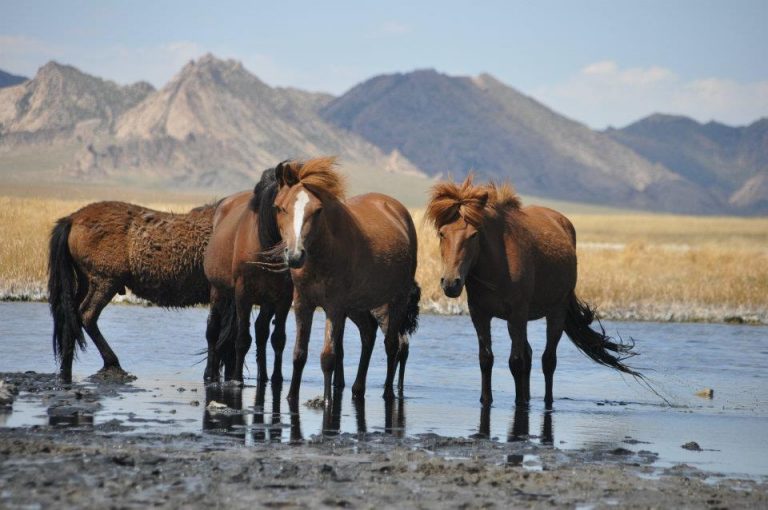
Unlike the more famous southern Gobi, the Middle Gobi offers a quieter, more serene experience. Those who venture into this overlooked region are rewarded with profound silence—a rare sanctuary from the noise of modern life—and the perfect setting for reflection and contemplation in a truly undisturbed landscape. Learn more in our blog post here.
Life In The Gobi’s Extremities
The Gobi Desert is known for its extreme environment, and one of the most formidable regions within it is the Great Gobi Strictly Protected Area (SPA) in southwestern Mongolia. This vast area is divided into two distinct parts: Part “A” of the Great Gobi SPA spans five districts in Bayankhongor Province, while Part “B” covers four districts in Khovd and Govi-Altai provinces. Additionally, there is a Small Gobi “A” and “B” in the southeastern Gobi, representing key desert ecosystems, including the saxaul forest. The saxaul plant, found as either a small tree or large shrub, has heavy, coarse wood and spongy, water-soaked bark that helps it survive in arid conditions. This region is also the natural habitat of the endemic khulan (wild ass).
The Great and Small Gobi SPAs were established to protect integral parts of the Central Asian desert ecosystem. Despite the harsh conditions, these protected areas support some of Mongolia’s rarest and most critically endangered species and serve as vital sites for large-scale animal migrations. Endangered species found here include the Snow leopard, Ibex, Argali sheep, Saiga antelope, Gobi bear and wild Bactrian camel. Additionally, the Przewalski horse, once extinct in the wild, has been successfully reintroduced to the Takhiin Tal reserve within the protected area.
The Great and Small Gobi SPAs provide an exceptional opportunity to conserve and study these unique ecosystems and the endangered species that inhabit them, safeguarding a vital part of Mongolia’s natural heritage. However, it is important to note that these areas are strictly protected, and visiting them requires specific permits. To ensure minimal environmental impact, any visit should be arranged through a conservation organisation that can guide you in adhering to the region’s strict protections and responsible tourism practices.
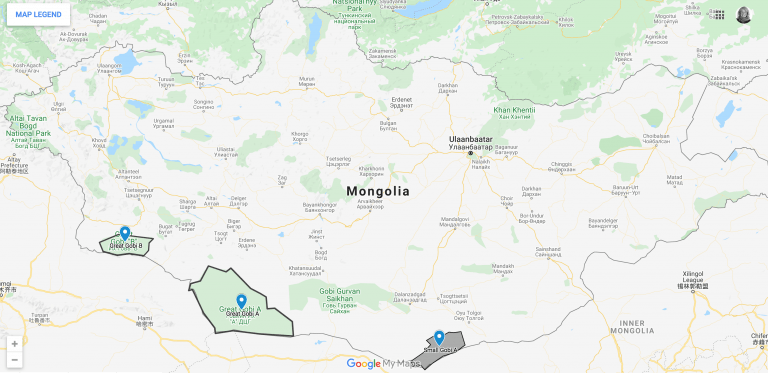
Energy Centres
When you think of the Gobi Desert, energy centres might not be the first thing that comes to mind. However, Khamariin Khiid Monastery, established in the 1830s by Danzan Ravjaa—a revered figure in Mongolia though less known in the West—is a significant spiritual site. This monastery serves as both a place of worship and a pilgrimage destination for Mongolians and followers of Buddhism.
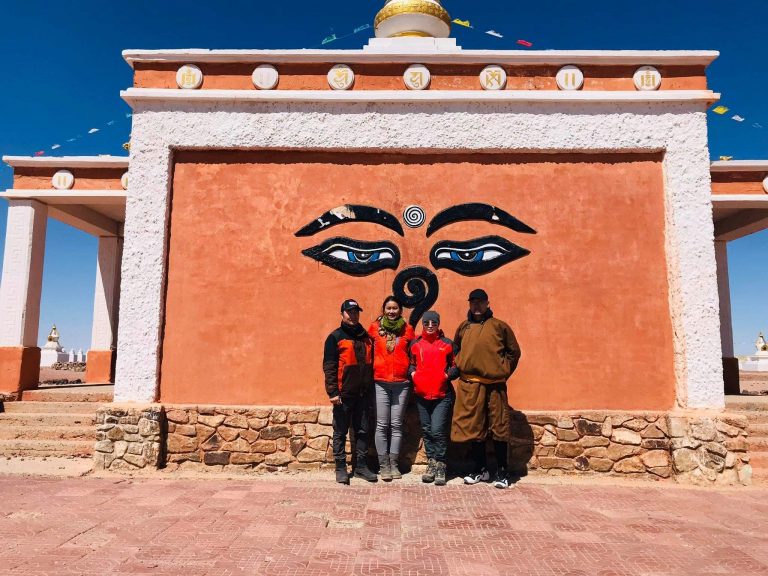
Central to the spiritual importance of the monastery is its connection to Shambala, a legendary kingdom believed to be located in Central Asia, though its precise location remains a mystery. Shambala is said to be a peaceful realm where inhabitants live in joy and harmony, and many Mongolians believe that the entry to this mystical kingdom lies within Khamariin Khiid.
Learn more about the monastery and its spiritual significance in our blog post here.
‘The Gobi will make you question everything you thought you knew about the desert. It will strip the layers of expectation, familiarity and ‘seen it all before’ mentality from the harshest of critics. No longer will you compartmentalise landscapes into preconceived boxes. ‘The ground was speckled with tuffs of grass, livestock were huddled around a ger and there were drops of water obscuring my view. RAIN?! Barren rocky outcrops, glistening natural springs bordered by lush green trees, wind swept dunes and blazing sunsets amongst the ghosts of prehistoric creatures. From the furgon, the back of a camel and on foot I moved through these changing scenes like the sole actress on a deserted film set.
The remoteness lends itself to a sense of freedom and unconscious ownership. Just when you feel an element of power over the landscape, mother earth will remind you of your perilous position in the world. This tap on the shoulder came to me deep in the middle of the night. The wind embraced the tent with the full force of a bear hug, using my body as a barrier against the side bending to it’s demands, I felt as minuscule as an ant in the wide open steppe.’
Megan Greentree, EL guest
Explore Using Our Map
If you’re interested in exploring the Gobi Desert with us, to help you plan, the following map highlights some of our favourite locations in the region. In keeping with tradition, all journeys in Mongolia typically follow a clockwise direction—ours does too, ensuring an immersive and authentic exploration of the Gobi.
Why Not Join Us?
If you’d like to experience the Gobi Desert with us, you can choose from one of our dedicated Gobi journeys
Essence Of The Gobi | Private, Tailor Made & Adaptable | 7 Days
Essence Of Mongolia | Small Group Trip | September 5-16 2026
Or, explore our collection of other shorter experiences, several of which highlight the desert’s most captivating landscapes.
Whichever adventure you decide on, we’d be delighted to welcome you to the remarkable Gobi.
Jess @ Eternal Landscapes




